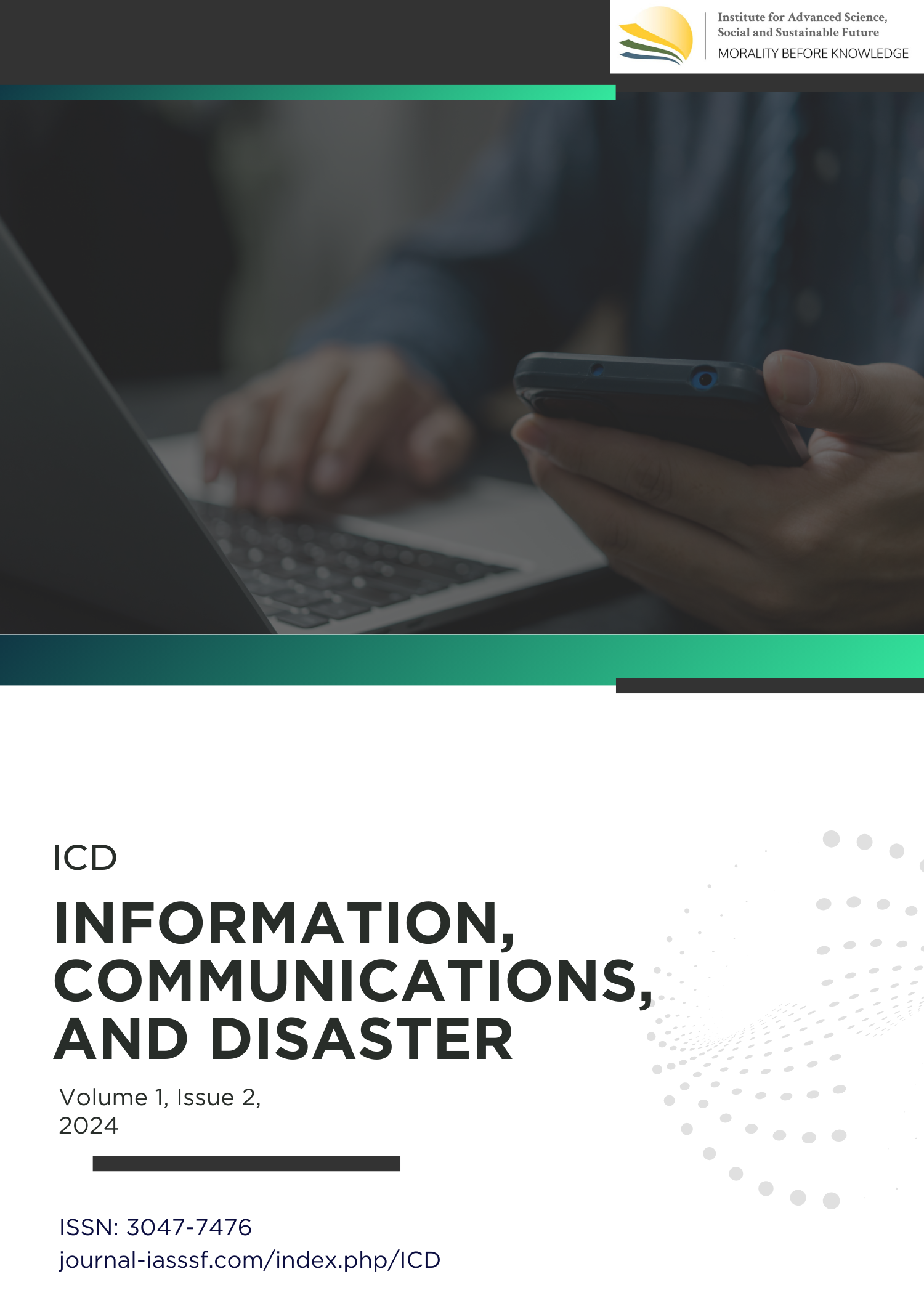Strengthening disaster resilience in Indonesia: A framework for sustainable recovery through the pentahelix model
DOI:
https://doi.org/10.61511/icd.v1i2.2024.1944Keywords:
disaster management, sustainability, pentahelix collaborationAbstract
Background: Disaster management has evolved into a multidimensional effort, particularly as global risks related to climate change, urbanization, and environmental degradation intensify. According to UNISDR and UNDRR, disasters result from the interplay of hazards, exposure, vulnerability, and capacity, disrupting communities and causing widespread human and environmental losses. In Indonesia, where various natural and anthropogenic hazards converge, sustainable disaster management is crucial to protecting development gains and community resilience. Methods: This study adopts a qualitative-descriptive approach by synthesizing conceptual frameworks from global and national disaster governance institutions such as UNISDR, BNPB, and related scholarly sources. The disaster management cycle—mitigation, preparedness, response, and recovery—is analyzed alongside the Indonesian Disaster Risk Index (IRBI) formulation to understand systemic risk factors and governance responses. Findings: Findings emphasize that effective disaster risk reduction requires a strong integration of sustainability principles across all stages of the disaster management cycle. These principles are best realized through the pentahelix collaboration model, involving five key stakeholders: government, community, private sector, academia, and media. This inclusive model promotes shared responsibility, adaptive capacity building, and the adoption of eco-friendly technologies to minimize environmental impact in disaster interventions. Conclusion: The successful implementation of sustainable disaster management strategies requires long-term commitment, policy alignment, and systemic coordination across sectors and scales—local, national, and international. While progress is being made, particularly through instruments such as the Indonesian Post-Disaster Needs Assessment/Pengkajian Kebutuhan Pascabencana (JITUPASNA), broader cooperation and innovation are essential to ensure that response and recovery efforts do not create new vulnerabilities or environmental risks. Novelty/Originality of this article: This study offers a novel perspective by emphasizing the systemic application of sustainability principles in disaster management beyond emergency response, embedding them into the core of disaster governance. Additionally, it highlights the significance of the pentahelix approach as a transformative model for building long-term resilience in disaster-prone contexts.
References
Baas, S., Ramasamy, S., Depryck, J. D., & Battista, F. (2008). Guide for DRM Systems Analysis Disaster Risk Management Systems Analysis.
BNPB. (2024). Indonesia Disaster Infographic January 1 - October 15, 2024. BNPB.
Coppola, D. P. (2011). Introduction to International Disaster Management 2Nd Edition (P. Chester & G. Chalson, Eds.). Elsevier Inc.
HAG. (2022). Greening The System: A Vision for a Green Humanitarian Future. Hag, Glow &, & Piango.
IFRC Disaster Law. (2022). Disaster Recovery In Indonesia: A Legal and Policy Survey. IFRC Disaster Law.
IOM (2022). IOM in Indonesia: Disaster Climate and Resilience. The International Organization for Migration.
IPCC. (2022). Climate Change 2022: Impacts, Adaptation and Vulnerability. Cambridge University Press.
Juwitasari, R. (2022). Disaster Management in Indonesia: Complex Challenges of a Dual Early Warning System. Heinrich Boll Stiftung Southeast Asia.
PUSDATIN BNPB. (2021). Disaster Risk Index 2021. Pusat Data dan Teknologi Informasi Badan Nasional Penanggulangan Bencana.
PUSDATIN BNPB. (2023). Indonesia Disaster Risk "Understanding Systemic Risk In Indonesia. Pusat Data dan Teknologi Informasi Badan Nasional Penanggulangan Bencana.
Rosyanti, L., Putri, D. P., Hadi, I., & Wijayati, F. (2024). Reference Book: Concept Of Disaster Management Publisher. CV. Eureka Media Aksara.
Taufan Maulana, A., & Andriansyah, A. (2024). Disaster Mitigation in Indonesia. COMSERVA: Journal of Research and Community Service, 3(10), 3996-4012. https://doi.org/10.59141/comserva.v3i10.1213
UNDRR (2017). Disaster Risk Reduction Terminology. UNDRR.
UNDRR (2019). Global Assessment Report on Disaster Risk Reduction 2019. United Nations Office for Disaster Risk Reduction (UNDRR).
UNDRR & CRED. (2020). The Human Cost of Disasters: an overview of the last 20 years (2000-2019). UNDRR, & CRED
UNISDR (2009). UNISDR Terminology on Disaster Risk Reduction. United Nations International Strategy for Disaster Reduction (UNISDR).
UNISDR. (2015). Sendai Framework for Disaster Risk Reduction 2015 - 2030. United Nations International Strategy for Disaster Reduction (UNISDR).
U.S. Embassy Jakarta. (2023). USAID and Humanitarian Forum Indonesia partnership to Enhance Capacity Organization Community Sipil in Disaster Management. U.S. Embassy Jakarta.
World Bank Indonesia. (2019). Preparing Indonesia for Natural Disasters at Future Future. World Bank Indonesia.
Downloads
Published
Issue
Section
Citation Check
License
Copyright (c) 2025 Leonita Agustina Setyawati

This work is licensed under a Creative Commons Attribution 4.0 International License.














